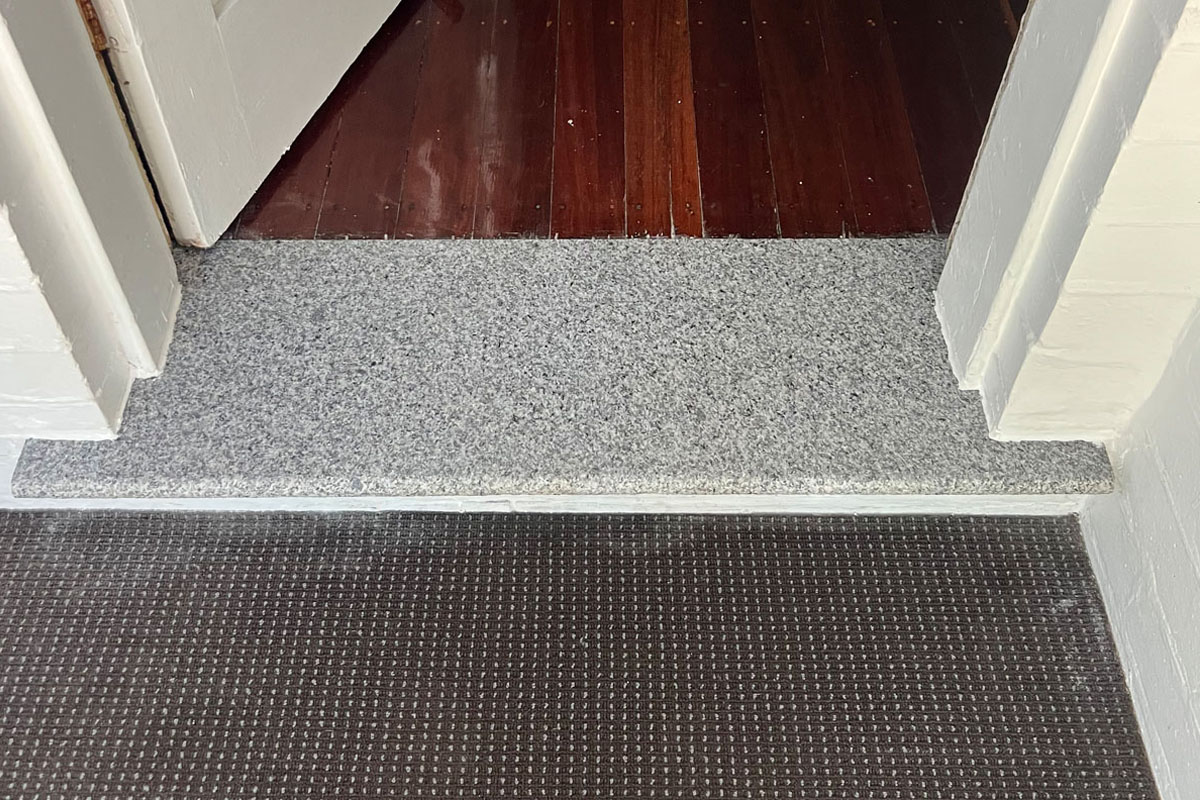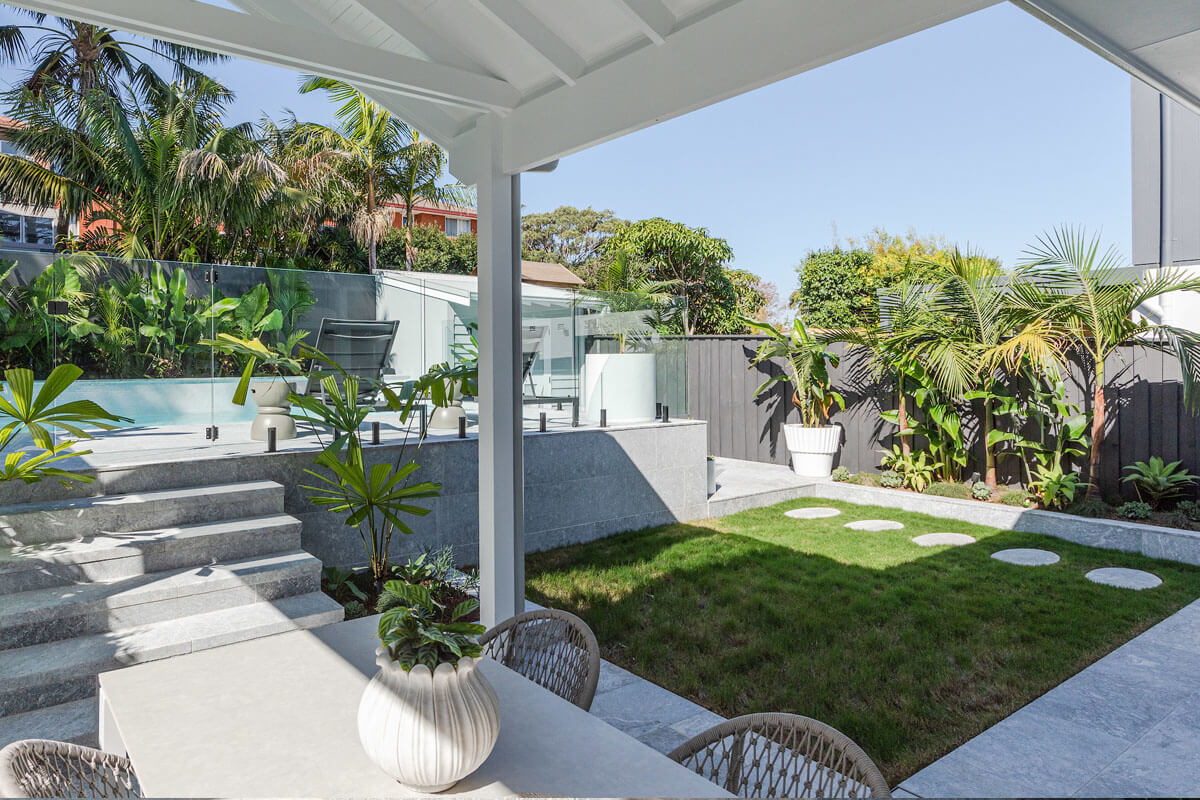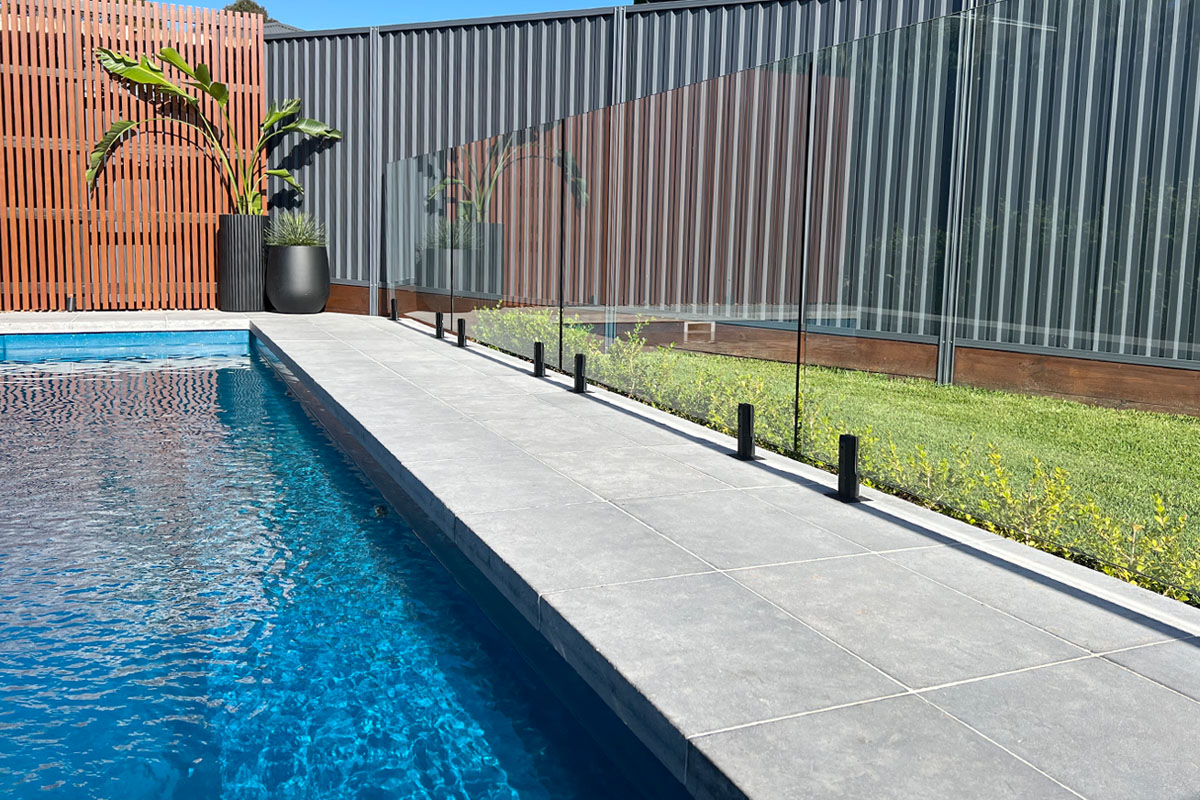Tips for Designing A Sandstone Garden Path
Walkways are as practical as they are beautiful.
They can be used to divide the garden and also ensure that your grass is protected from any unwanted trampling.
If you will be using your garden frequently, a path also gives your family and guests a stable surface to walk on and directs their eye-line and way around the backyard.
So whether you want to create a full walkway or add stepping stones set in grass, creating a sandstone path isn’t as hard as it seems.
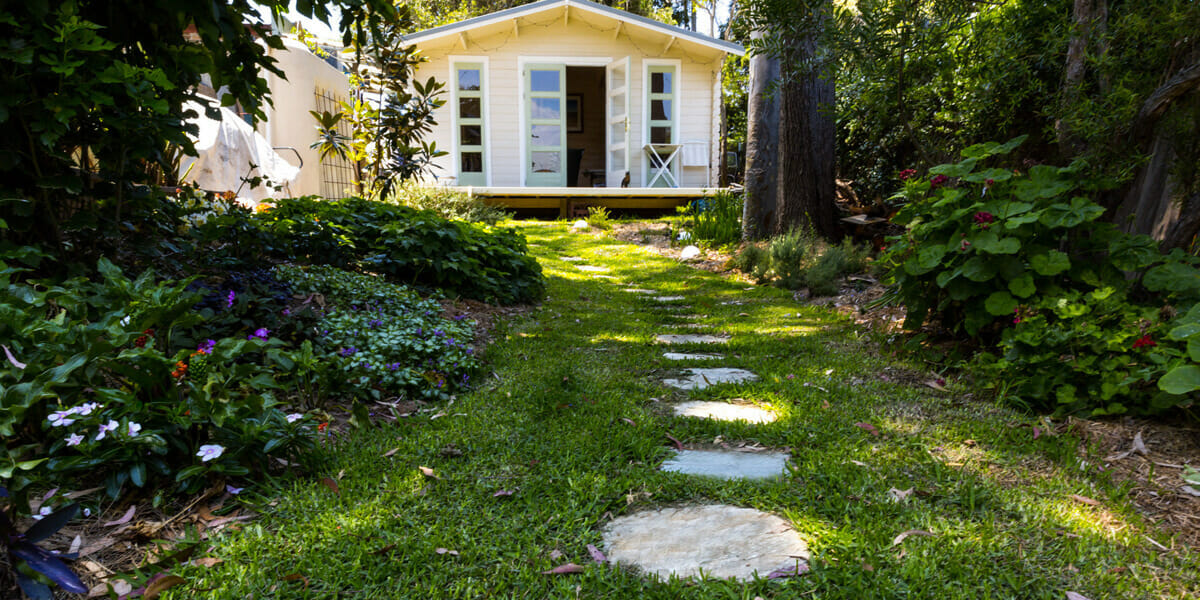
** Citrine Quartz Stepping Stones
Why do you need a path?
One of the main reasons to create a path through your garden is to give people a stable surface to walk on. Without a walkway, the grass, soil and surrounding plants will simply erode over time as people trample over it. Also, if the ground is wet, a pathway reduces the risk of slippage and people ruining their shoes.
But there are plenty other reasons to install a path in your garden. Some of these include:
- To define an area – for example, a dining area or a relaxed sitting area
- To direct traffic – if you have a specific area you want to be used more than another area, a pathway directs people towards it.
- To create visual interest – it’s great to have grass, plants and trees in your garden and adding a path adds textures and layers to your garden, breaking up all the green with something contrasting or complementary.
- To draw the eye to an area of the garden that usually goes unnoticed.
In fact, sometimes pathways are embedded purely for aesthetic reasons – to add an element of drama or contrast to your backyard.
Getting started
Before you start building your path, your first course of action is to decide the purpose you want for it and whether you want to build a full walkway or if stepping stones will suffice.
Next, draw it out so you can actually see your ideas on paper. If you’re more tactile and want to see how the path will physically look, grab a garden hose and physically lay it out.
Some other important considerations include:
- Will it be a high traffic area? If so, it’s a good idea to make it wide enough for two people to walk side-by-side.
- Will the path divide the garden in some way? If so, carefully decide how to place it.
- If it will suit your aesthetic, consider adding some curves to your design. That way, it can be both practical and scenic.
- Will it cope with all types of weather? For example, paths made from sandstone are a popular choice amongst Australian homeowners and designers alike, however sandstone is also a porous stone and if the path is exposed to wet weather very often, it can erode over time.
- Ensuring that your chosen design nicely complements the rest of the landscaping instead of detracting from it. If we use the example of sandstone, you’re on the right path again (pun intended). Why? Because sandstone is an elegant stone with a natural appearance so it tends to effortlessly blend in with its surrounding elements. Its timeless appeal also means it works well in both modern and traditional gardens.
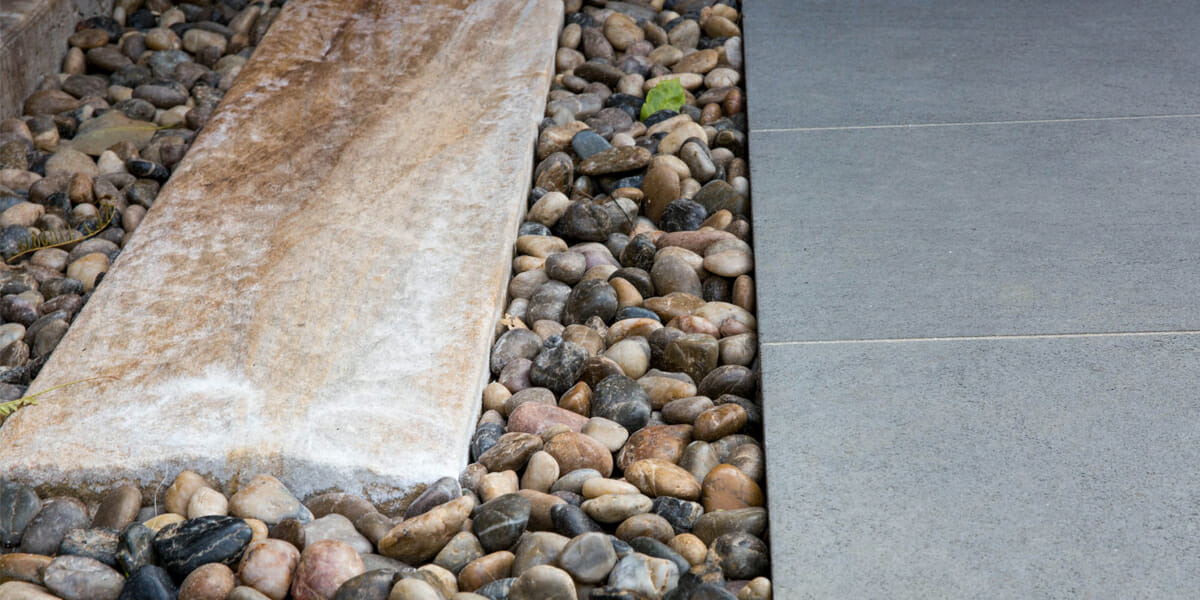
Next steps
Once you’ve decided on the design, it’s time to get out your measuring tools and materials. A rule of thumb we always suggest is to always overestimate. Why? Because you never know what may go wrong when you start laying the path and so it’s always better to have extra materials on hand so you can troubleshoot as you go. Another reason you want to overestimate is when you finish the construction, it’s also handy to have extra stones on hand because if in two years’ time something happens and you need to replace a tile, you’ll have a perfect match (from the same batch) handy!
So you have the materials and tools, now you’ll actually have to lay out the path. Before permanently securing your pavers, arrange the pavers or stepping stones in your in your desired design. Whether you’re installing a full path or stepping stones, this helps you visually see what the final layout will look like and it it needs any tweaks, you can make them without needing to rip anything out in the process. If you’re using stepping stones, test out the path and take a walk along it to make sure the pavers are spaced correctly and aren’t wobbling. Then adjust as necessary.
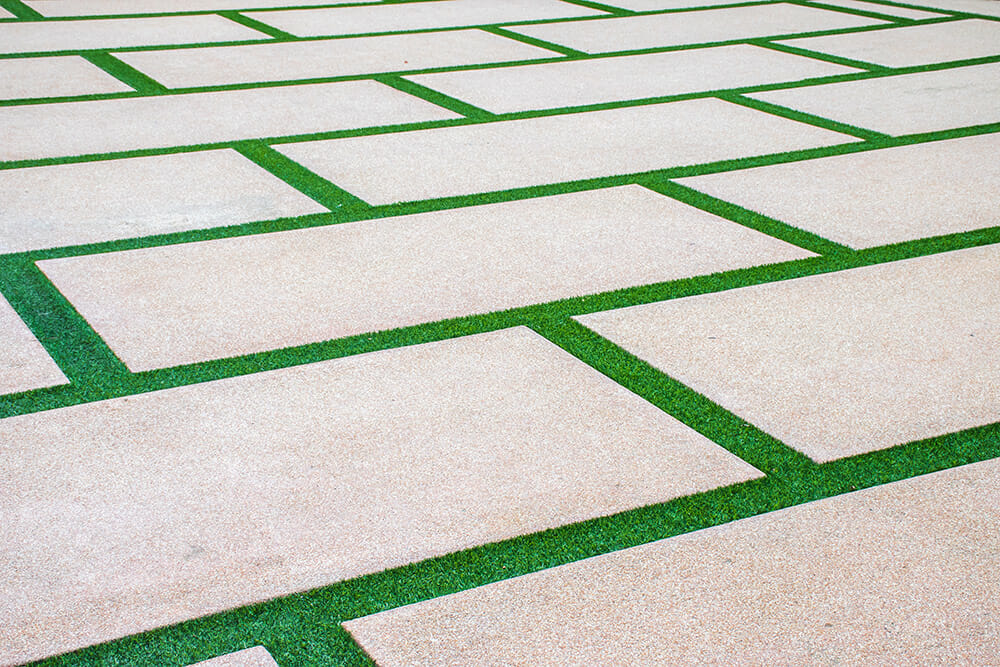
Before you lay the path or stepping stones, remember to pad the ground underneath the pavers with the correct material. Most of the time, some sand-cement screen is a good enough foundation, however, cement is also an equally reasonable option.
The last step is to lay the pavers. Of course, you can get experts to help with this part (well, you can get an expert to take over this entire process if you really wanted to) but if you’re doing it yourself, make sure you properly prepare the turf and surface underneath it. The trick of the trade here is to make sure you’re installing the pavers at the correct height as well because if you install the pavers too low, the grass will constantly grow over them and the pathway will just disappear from view. On the other hand, if you install them too high, you won’t be able to push a lawnmower over the stone to cut the grass. It’s a fiddly, and important, matter. So be sure to get it right or hire someone who can help you.
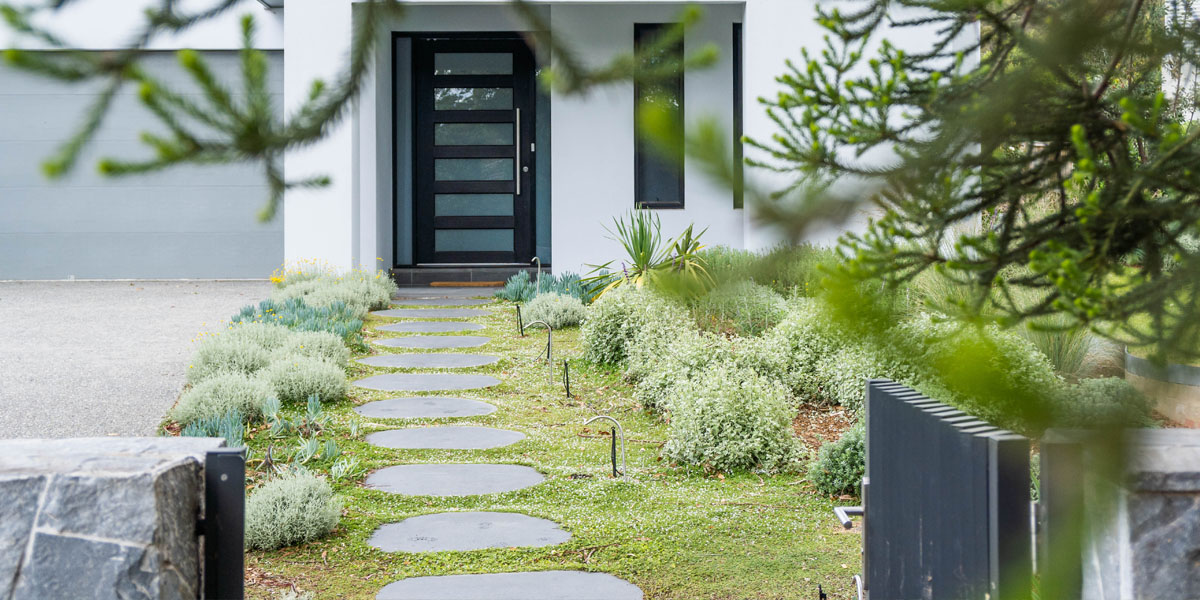
Some final tips
Whether they are a full walkway or a set of stepping stones, paths add an additional layer to your garden and help direct traffic to specific places. They’re also a lovely and gentle way to divide the space into different sections.
If you are creating a garden path using sandstone pavers or stepping stones, it’s all about embracing the elements of the landscape and complementing the style of home. The beauty about sandstone is that it works with almost every type of garden and every type of home, whether it is modern, grand, humble or eclectic.
If you’re ready to get started and have questions about sandstone pavers in a variety of colours, sizes and textures, at Armstone we stock them all!
Reach out to us online, call 1300 560 560 or visiting our Sydney showroom in Glebe.
We’ve over 10 years experience helping our clients bring their paths from paper to life.
We love this stuff and would love to help you too!
